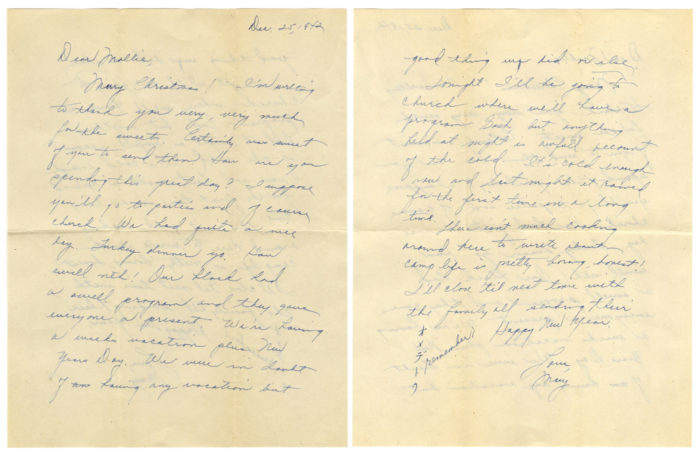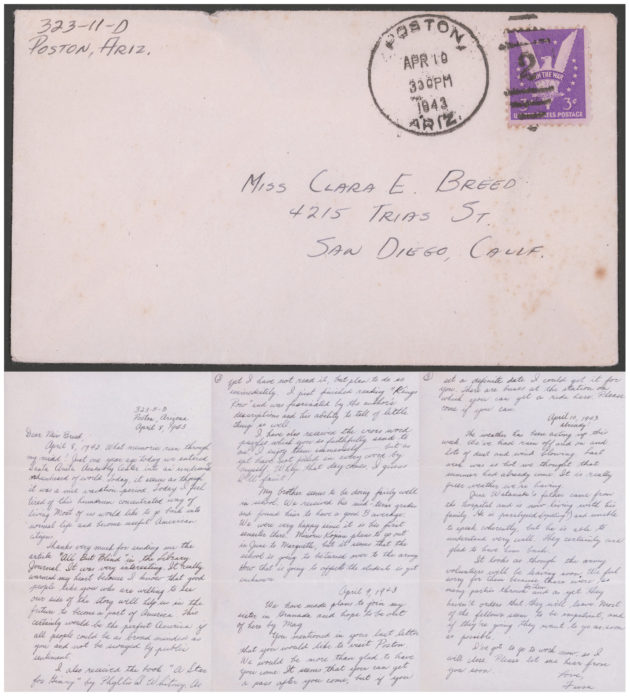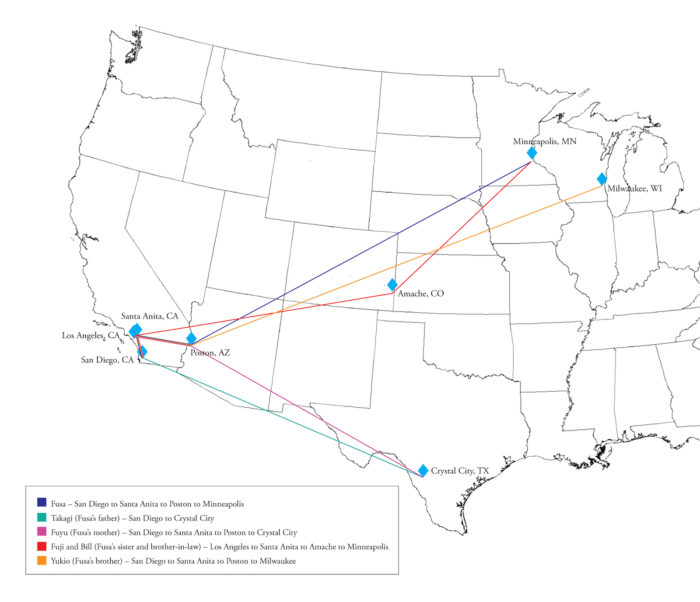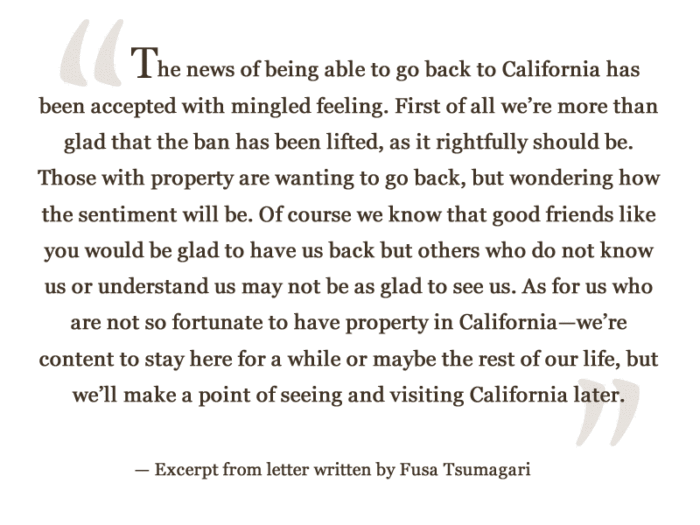Poston
Location: Parker, Ariz.
Peak population: 17,814
Date opened: June 2, 1942
Date closed: November 28, 1945
The Poston War Relocation Center held people from Arizona, Oregon, and Washington. The Salinas, Santa Anita, and Pinedale Assembly Centers in California, as well as the Mayer Assembly Center in Arizona, sent their populations to Poston.
Poston was located on a Native American reservation and it was jointly administered by the War Relocation Authority and the Bureau of Indian Affairs. Due to its size, Poston was comprised of three camps: Poston I, Poston II, and Poston III, commonly known to the incarcerees as Roastin’, Toastin’, and Dustin’.
Located at 320 feet of elevation in southwestern Arizona on the Colorado River Reservation in Yuma County (now La Paz), Poston was 12 miles south of the town of Parker. It occupied 71,000 acres in the lower Sonoran Desert near the California border, and the Colorado River ran 2.5 miles to the west. The harsh climate featured hot and humid summers and cold winter nights. Dust was a constant problem.
Poston had the largest number of draft resisters.
For more info about Poston, click here.

Japanese American National Museum, Gift of Mollie Wilson Murphy (2000.378.2A)
Click to open full-size image in new tab.This object is part of the story A Friend Back Home, which is about Loyalty.
- As you look at this photograph, what do you notice?
- What are some things that give you a sense of the time period?
- What are the names of these two individuals?
- Do you have any guesses about who they are and what their relationship is to one another?
- How would you describe the mood of this photograph?

Japanese American National Museum, Gift of Mollie Wilson Murphy (2000.378.5F)
Click to open full-size image in new tab.This object is part of the story A Friend Back Home, which is about Loyalty.
Carefully read this letter and consider the following questions:
- Who wrote this letter?
- To whom was the letter written?
- What information can you gather about who Mollie is? Where is she?
- What information can you gather about who Mary is? Where is she?
- What are some of the topics written about in this letter?
- Based on the content of this letter, what kind of camp is Mary referring to?
Mollie Wilson lived in Los Angeles and attended Roosevelt High School. Many of her Japanese American friends were forced to move during World War II. She would often write to her incarcerated friends, such as Mary Murakami.

Japanese American National Museum, Gift of Mollie Wilson Murphy (2000.378.5B)
Click to open full-size image in new tab.This object is part of the story A Friend Back Home, which is about Loyalty.
Letters provide a great window into history. Even from an envelope alone, there is much information to be gathered. This is the envelope for a letter from Mary to Mollie.
Look closely at the envelope.
- What do you notice?
- Based on the return address and cancellation stamp, can you tell where Mary was living when she sent this letter?
- Why do you think one address is crossed out and replaced by another?

Japanese American National Museum, Gift of Mollie Wilson Murphy (2000.378.24)
Click to open full-size image in new tab.This object is part of the story A Friend Back Home, which is about Loyalty.
This is a photograph of Sandie Saito. Like Mary, she was a friend of Mollie’s from Roosevelt High School. Sandie is pictured here in a Roosevelt letterman sweater while incarcerated at Amache, Colorado. Sandie sent this photo to Mollie from Amache. In the corner she wrote, “To Molly, Just, Sandie,” and on the back of the photograph it says, “This picture was taken way at the west end of the football field.”
Imagine being a young person who is forced to abruptly migrate to an unknown place, far from everything familiar.
- What people, places, activities, or things would you miss about your daily life?

Clara Breed Collection, Japanese American National Museum, Gift of Elizabeth Y. Yamada (93.75.31EW)
Click to open full-size image in new tab.This object is part of the story Letter Home, which is about Migration.
Here are a letter and envelope. Read the text of the letter carefully and note all the signs of migration that are described. Consider the following questions:
- To whom is this letter written?
- Where does the recipient live?
- Who wrote this letter?
- Where does the writer live?

Courtesy of National Archives and Records Administration
Click to open full-size image in new tab.This object is part of the story Letter Home, which is about Migration.
The United States government kept records for all the individuals who were incarcerated during World War II. This is the record for Fusa Tsumagari, who wrote the letter to Miss Breed.
- What does the letter reveal about Fusa?
- Where was she before the war?
- Where did she go after the war?
- Fuyu Tsumagari is her mother. Where did Fuyu go after the war?
- Yukio Tsumagari is her brother. Where did Yukio go after the war?

Tsumagari family migration map
Click to open full-size image in new tab.This object is part of the story Letter Home, which is about Migration.
Japanese American families experienced a great deal of migration and displacement during this period. Many families such as Fusa’s were split up with individual family members going to different places for various reasons. This map shows some of the places that the Tsumagari family members lived before, during, and after World War II.
- San Diego, California: This is where Fusa and her family lived before the war. It is also where Miss Breed lived.
- Los Angeles, California: This is where Fusa’s sister and brother-in-law, Fuji and Bill, were living before the war.
- Crystal City, Texas: Fusa’s father, Takagi, was sent to a Department of Justice camp here in 1942; her mother, Fuyu, joined him upon leaving Poston in April 1944. Fusa also went here with her mother before going to Minneapolis.
- Santa Anita, California: The Tsumagari family was sent to the Santa Anita Assembly Camp in April 1942.
- Poston, Arizona: Fusa, along with her mother and her brother, Yukio, were sent to a concentration camp here in August 1942.
- Amache, Colorado: Fuji and Bill were sent to the concentration camp here in September 1942.
- Milwaukee, Wisconsin: Yukio left Poston in January 1943 to attend college here at Marquette University. Japanese American college students weren’t able to study on the West Coast, but they could attend school if they could find a college to accept them in a state that wasn’t on the coast.
- Minneapolis, Minnesota: After leaving Amache, Fuji and Bill went here in April and May of 1943 to work. Fusa joined them after leaving Poston in April 1944 and found a job as a typist at a department store.

Clara Breed Collection, Japanese American National Museum, Gift of Elizabeth Y. Yamada (93.75.31S)
Click to open full-size image in new tab.This object is part of the story Letter Home, which is about Migration, Uncategorized.
This is an excerpt from another letter Fusa wrote to Miss Breed. Miss Breed was the children’s librarian at San Diego Public Library from 1929 to 1945. When her young Japanese American patrons were forced into concentration camps with their families in 1942, Miss Breed became their reliable correspondent, sending them books and assisting with requests for supplies. Through her actions, she served as a reminder of the possibility of decency and justice in a troubled world.
When Fusa wrote this letter, she had already left camp in Poston, Arizona, and moved to Minneapolis, Minnesota, where her sister and brother-in-law were living.
- How would you describe the tone of this letter excerpt?
Even without reading the letters Miss Breed wrote to her students, one can find many things revealed in letters the students wrote to her.
- Based on the content of this letter, what can you conclude about Miss Breed?
- What evidence brings you to those conclusions?
